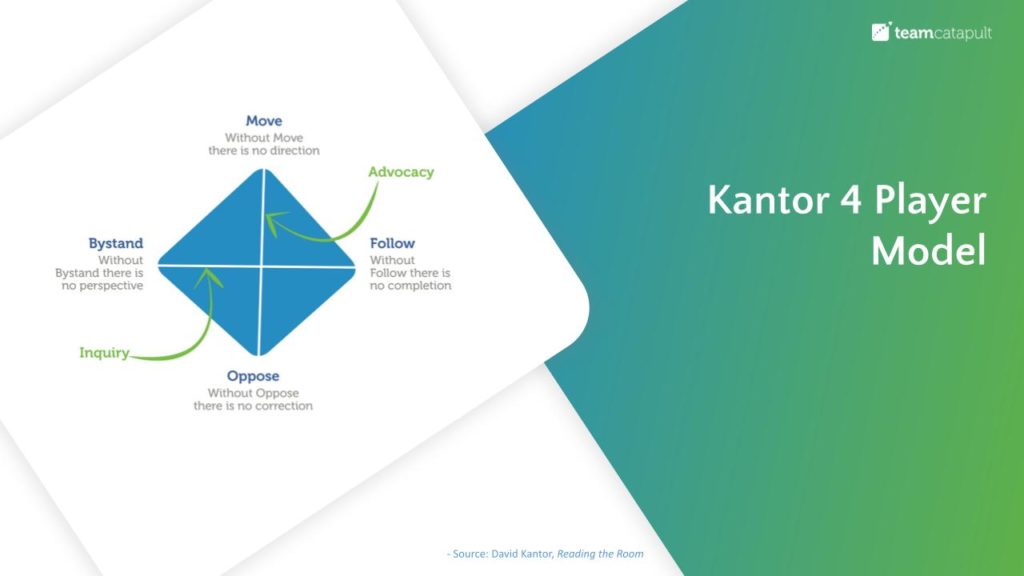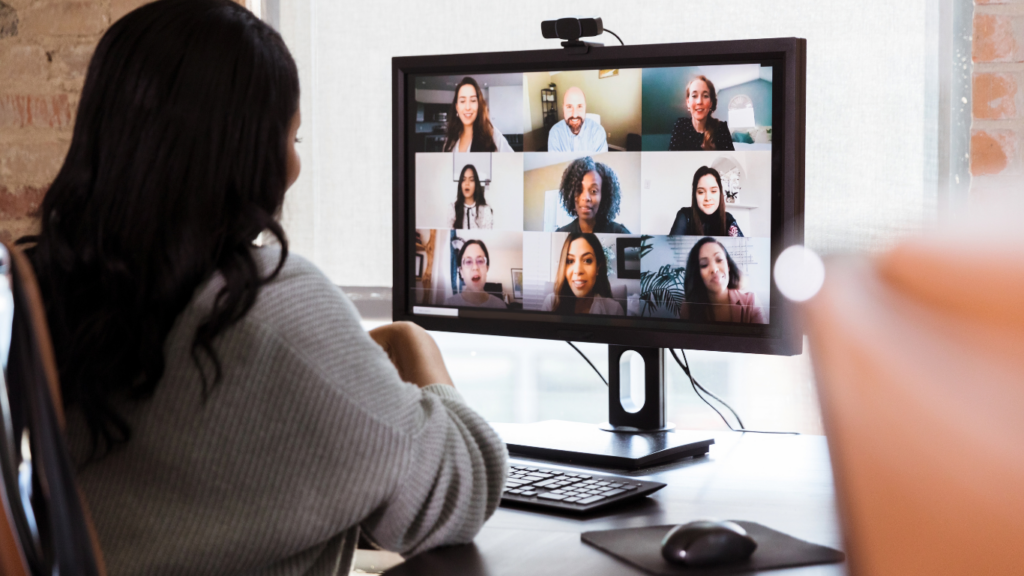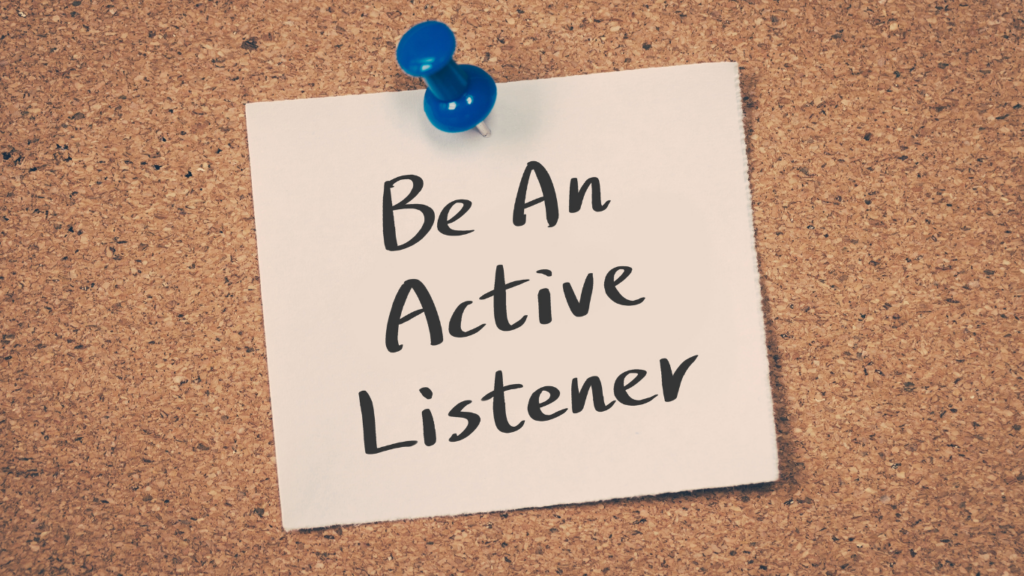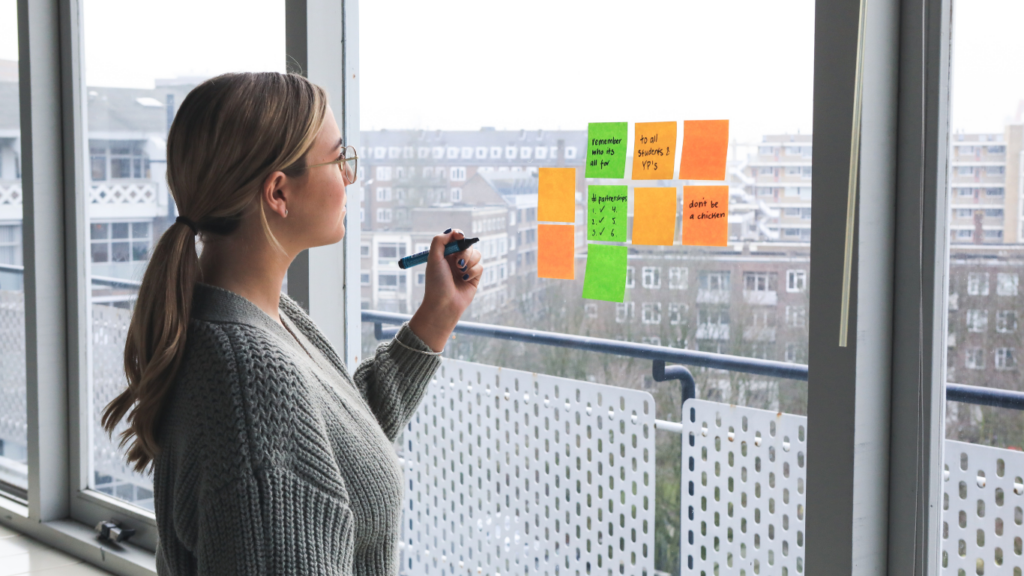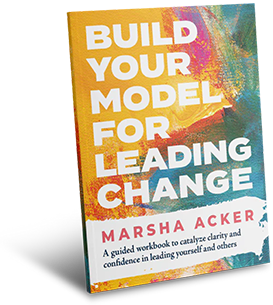Whether you are a leader, a manager, or an employee, effective communication in the workplace is of utmost importance. Without clear, effective communication skills, it is nearly impossible to achieve goals, advance a career and be successful in an organization.
In fact, poor communication and lack of effective communication skills are huge contributors to losing clients, loss of employees, and overall business failure.
In this article, we will explore everything needed to understand the importance of effective communication in the workplace. We will also show leaders like you how to effectively communicate with team members and stakeholders.

Modeling Communication as a Leader
Leaders more than anyone else within a company need to take responsibility for proper communication among the team and its members.
Leaders can model their communication habits and their communication styles and set communication expectations within the organization.
Why is effective communication important in the workplace?
Developing better communication habits and skills can provide useful employment opportunities for leaders and employees alike.
For leaders, effective communication in the workplace is crucial.
Communication
- Articulates vision, goals, and strategies clearly.
- Cultivates a positive work environment of trust and respect.
- Resolves conflicts and prevents misunderstandings.
- Enhances teamwork and collaboration.
- Builds strong relationships with stakeholders, clients, and customers.
How do you measure effective communication in the workplace?
How do you know when your communication has been effective? When do you know you are heard?
Two words: Employee Retention!
When employees feel heard and cared for, they stay. They stay longer for less money They will give up career advancements and opportunities to stay. Loyalty is earned through communication. Those organizations who understand this not only win more business but thrive in all aspects of their business.
Effective Communication in Personal Life
Effective communication is equally important in our professional and personal lives as it lays the groundwork for healthy relationships, understanding, and emotional well-being.
When we communicate effectively with our loved ones, friends, and acquaintances, it fosters deeper connections, resolves conflicts, and builds trust.

Start with Empathy!
Clear and empathetic communication allows us to express ourselves authentically, listen actively, and comprehend others’ perspectives, leading to more fulfilling relationships and a greater sense of personal satisfaction.
Effective Communication in Workplace
Effective work communication is a great tool for your success. It is vital for fostering collaboration, productivity, and a positive work environment.
Clear and concise communication enables leaders and team members to convey their ideas, expectations, and goals, ensuring alignment and shared understanding.
Information Sharing in the Workplace
Information sharing, problem-solving, and decision-making aka clear communication leads to improved outcomes.
Effective communication cultivates a more work culture full of trust, respect, and open dialogue, enhancing teamwork, employee engagement, and overall organizational success.
Practice Active Listening in the Workplace
Active listening goes beyond simply hearing the words spoken; it involves fully engaging with the speaker, understanding their perspective, and demonstrating empathy.
By actively listening, leaders and team members can create an atmosphere of trust and respect, encourage open dialogue, and foster meaningful connections. Active listening enables better communication skills and comprehension, reduces misunderstandings, and promotes a collaborative and inclusive work environment where everyone feels heard and valued.

Communication Improves Engagement
Effective communication in the workplace significantly contributes to improved employee engagement. When leaders and team members communicate openly, transparently, and consistently, it fosters a sense of belonging and involvement.
Engaged employees feel valued, heard, and informed about organizational goals, changes, and progress. Communication channels that encourage feedback and provide opportunities for dialogue create a culture of engagement where employees are motivated to contribute their best efforts.
Leaders can inspire and empower their team members, leading to better relationships, increased productivity, satisfaction, and a positive work environment.
Communication Affects Employee Retention
Effective communication plays a crucial role in employee retention within organizations. When leaders prioritize open and transparent communication, it creates an environment where employees feel valued, respected, and informed.
Clear communication regarding expectations, feedback, and career development opportunities helps employees understand their roles and potential growth within the organization. Effective communication allows leaders to address concerns, provide support, and recognize employee contributions, boosting morale and job satisfaction.
By fostering good relationships and a culture of communication, organizations can build stronger relationships with employees, increase their commitment to the company, and ultimately enhance employee retention rates.

David Kantor 4 Player Model of Communication
At Teamcatapult we teach Structural Dynamics, which is a communication model based on David Kantor‘s work.
The David Kantor 4 Player Model of Communication, also known as the Structural Dynamics model, is a framework that describes the different roles individuals can take during communication interactions.
This model highlights four distinct communication roles or “players” that contribute to effective communication: Mover, Follower, Opposer, and Bystander. David Kantor’s book ‘reading the room‘ explains this model and concept.
The 4 Player Model of Communication in Action
- Mover: The Mover role represents the person initiating communication, presenting ideas, and driving action. They focus on advocating for their viewpoint and taking charge of the conversation.
- Follower: The Follower role involves actively supporting and contributing to the communication initiated by the Mover. Followers listen attentively, offer support, and provide additional information or perspectives to complement the Mover’s ideas.
- Opposer: The Opposer role challenges or questions the ideas put forward by the Mover. They play a critical role in the communication process by bringing up alternative viewpoints, identifying potential flaws, and advocating for different approaches.
- Bystander: The Bystander role represents individuals who observe the communication but choose not to actively engage. They may withhold their opinions or remain neutral, often waiting for more information or the resolution of conflicts before participating.
The 4 Player Model emphasizes the importance of balancing these roles for effective communication and problem-solving. It recognizes that each role contributes unique perspectives and dynamics to the conversation, and successful communication involves a fluid interplay between them.
Understanding and applying this model can help individuals and teams navigate complex and communication challenges and scenarios, manage conflicts, and facilitate more productive and collaborative interactions.
Putting the 4 Player Model of Communication into Practice
Let’s consider an example of a team meeting where the 4 Player Model of Communication is applied:
Mover: Jane, the team leader, takes on the Mover role by initiating the discussion on a new project proposal. She presents her ideas, goals, and the benefits of the project to the team.
Follower: John, a team member, assumes the Follower role by actively listening to Jane’s presentation. He asks clarifying questions, provides additional insights, and expresses his support for the project, contributing many important skills to its development.
Opposer: Sarah, another team member, takes on the Opposer role by expressing concerns about the project’s feasibility within the given timeline and available resources. She offers alternative suggestions and presents potential challenges to be considered.
Bystander: Michael, another team member, initially remains in the Bystander role, observing the conversation without actively participating. However, as the discussion progresses, he starts engaging by sharing his previous experience with a similar project, providing valuable input.
In this scenario, the 4 Player Model helps facilitate a balanced and productive communication exchange. Jane, as the Mover, presents her ideas and sets the direction. John, as the Follower, actively supports and contributes to the discussion. Sarah, as the Opposer, challenges the ideas, fostering critical thinking and alternative perspectives. Michael, initially in the Bystander role, eventually contributes by sharing his expertise. The interplay between these roles allows for a comprehensive exploration of the project proposal, consideration of potential obstacles, and the generation of well-rounded solutions.
By leveraging the 4 Player Model, the team can foster a collaborative environment where diverse viewpoints are heard, conflicts are addressed, and decisions are made based on a more comprehensive understanding of the project’s implications.
Who Benefits from Using the 4 Player Model of Communication
The 4 Player Model of Communication can be beneficial for a wide range of individuals and groups who seek to enhance their communication skills and dynamics. Here are some examples of those who can learn and use certain skills from the model:
- Leaders and Managers: Leaders can apply the 4 Player Model to improve their communication with team members, promote collaboration, and manage conflicts effectively. It helps them understand different communication roles and adapt their approach based on the needs of the situation.
- Team Members: Individuals working within a team can utilize the model to actively participate in discussions, provide valuable input, and express their concerns or alternative viewpoints. It enables them to engage in productive dialogue, contribute to decision-making, and build stronger working relationships.
- Facilitators and Mediators: Professionals facilitating group discussions or mediating conflicts can employ the 4 Player Model to manage communication dynamics. It assists them in encouraging balanced participation, addressing differing perspectives, and guiding the conversation towards a resolution.
- Trainers and Educators: Trainers and educators can incorporate the 4 Player Model into their curriculum or workshops to teach effective communication skills. It helps learners understand the various roles, practice active listening, and develop their ability to engage in constructive dialogue.
- Individuals in Personal Relationships: The principles of the 4 Player Model can also be applied in personal relationships. It can help couples, friends, or family members communicate more effectively, listen actively, express differing opinions respectfully, and resolve conflicts in a healthy manner.
Overall, the 4 Player Model of Communication is a versatile framework that can be utilized by individuals and groups across various contexts to enhance communication dynamics, foster collaboration, and promote effective problem-solving.
How to keep communicating, even when working remotely
When it comes to enhancing communication in remote work settings, understanding and applying the principles of structural dynamics can be immensely valuable.
Remote work amplifies the importance of communication skills, making it essential to navigate the challenges and frustrations that can arise from limited face-to-face interaction.

Optimizing distance communication
To optimize distance communication, several areas should be considered. These include actively practicing the roles of Mover, Follower, Opposer, and Bystander to ensure a balanced exchange of ideas, actively listening and empathizing to foster understanding, utilizing technology effectively for seamless communication, establishing clear channels for feedback and collaboration, and nurturing a supportive team culture that encourages open dialogue and trust.
By leveraging these aspects of structural dynamics, individuals and teams can significantly improve their communication and thrive in remote work environments.
Ascertain Transparency and Develop Trust
The transparency of companies is increased through continuous communication. This is extremely important for building trust with the brand. It also applies to gaining trust among employees within senior management. Transparency is important in an organizational process, particularly when it comes to challenging decisions. Practicing transparency and fostering trust are vital components of effective communication in the workplace.
Building Trust Through Communicating and Collaborating
Maintaining open and honest communication channels within a company helps establish transparency, which is essential for communicating effectively and building trust with both customers and employees through collaboration. Transparent communication plays a significant role in gaining the trust of employees, particularly with senior management.
Building Trust with Transparency
When challenging decisions need to be made, transparency becomes even more critical, as it helps employees understand the rationale behind those decisions and reduces uncertainty. By prioritizing transparency and open communication, organizations can foster a culture of trust, strengthen relationships, and promote a more engaged and productive workforce.
Importance of Effective Team Communication in the Workplace
Effective team communication is crucial in the workplace as it forms the foundation for collaboration, productivity, and success. When team members communicate effectively, it facilitates the sharing of information, ideas, and feedback, leading to a better understanding of tasks and goals.
Clear and open communication helps to establish roles and responsibilities, promotes efficient workflow, and minimizes misunderstandings or conflicts.
Effective team communication cultivates a supportive and inclusive work environment where everyone feels valued, heard, and motivated to contribute their best. It fosters trust, strengthens relationships, and enhances teamwork, leading to improved problem-solving, innovation, and overall organizational performance.
Prioritizing effective team communication is essential for achieving shared objectives, boosting morale, and creating a positive workplace culture.

Listening and Understanding in the Workplace
Listening and understanding are essential when the goal is to improve communication in the workplace. The success of communication lies in engaging the recipient, ensuring they actively listen, comprehend, and interpret the message accurately.
When a person hears and the receiver demonstrates attentiveness and correctly interprets the message, communication becomes effective. Creating an environment where individuals genuinely listen and understand fosters better understanding, minimizes misinterpretation, and promotes successful communication outcomes.
How Can You Become a Better Communicator?
To become a more effective communicator, try applying the principles of the 4 Player Model.
Step 1, assume the role of the Mover by clearly expressing your thoughts and goals. Step 2, adopt the role of the Follower by actively listening and showing genuine interest in others’ perspectives.
Be mindful of the Opposer role by respectfully challenging ideas and seeking alternative viewpoints. Avoid the Bystander role by actively participating and contributing to the conversation.
By embracing these communication roles, you can practice effective communication skills, foster understanding, become a more collaborative communicator, and achieve success in your interactions.
Developing Communication Skills at Work
Effective communication relies on active listening, verbal and nonverbal communication. Nonverbal signs include eye contact, facial expressions, hand motions and any other nonverbal cue. Listening and focusing on listening will often be a helpful tool when structuring messages for effective workplace communication.
Listen with the intent to listen and hear, not just to give a response.

Skills needed to be effective communicators
To be an effective communicator, certain skills are crucial.
- Strong verbal communication skills allow individuals to express their ideas clearly and articulate their thoughts with confidence.
- Active listening skills are equally important, as they involve attentively understanding others’ perspectives and responding appropriately. An active listener is usually a great communicator.
- Nonverbal communication aka visual communication skills, such as reading people’s body language, maintaining eye contact and facial expressions, play a significant role in conveying messages effectively.
- Empathy enables communicators to understand and relate to others’ emotions and experiences, fostering deeper connections.
- Adaptability and open-mindedness allow individuals to adjust their communication style to different audiences and situations.
Developing and honing these skills is key to becoming an effective communicator in various personal and professional contexts.
Develop Effective Leadership Communication Skills
Continuously improve through research and reflection.
Be aware of any potential consequences of misinterpreted statements. Address difficult scenarios and conflicts by ensuring clarity in written communications prior to conversations with colleagues.
Navigating Barriers to Effective Leadership Communication
Understanding and addressing the barriers to communication is vital for effective leadership in the workplace. By recognizing common obstacles, leaders can proactively overcome them to foster better communication.
Common barriers such as fatigue, distractions, minimal verbal communication, lack of written communication skills, and inconsistent body language can hinder the flow of information and understanding.
What to Consider about Communication and Cultural Differences
Leaders should consider how their own personality traits can shape their communication effectiveness. Moreover, it is essential to acknowledge that aspects like gender and race also influence communication styles.
Leaders should strive to communicate with respect, devoid of biases, ensuring that their words are heard and valued by everyone.
Cultivating cultural competency is of utmost importance, as it enables leaders to navigate and understand diverse cultural perspectives, fostering inclusivity, and promoting effective communication within the team.
Good Communication Starts with Inclusion
Leaders should take steps to mitigate the impact of diversity, This can include promoting rest and well-being among team members, creating an environment conducive to concentration, and ensuring consistent and positive nonverbal cues. By actively addressing these barriers, leaders can cultivate a communication-friendly workplace where information flows smoothly and understanding is optimized.
Embrace Identity Diversity in Leadership Communication
In the workplace, it is crucial for leaders to recognize and embrace the influence of identity differences on communication. Factors such as personal identities, cultural heritage, and background significantly impact how individuals express themselves verbally.
Where to Start if You Want Effective Communication in the Workplace
To become a good communicator, consider focusing on your strengths as a communicator. Investing in improving your effective communication skills can yield numerous positive outcomes, such as increased efficiency, successful project completion, and stronger relationships.
You will also need the right communication tools and habits to make a change in your current communication behavior! We can help!
Check out TeamCatapult’s workshop offerings to learn more about Structural Dynamics, the 4-player model of communication, making behavioral change happen, and facilitation!



